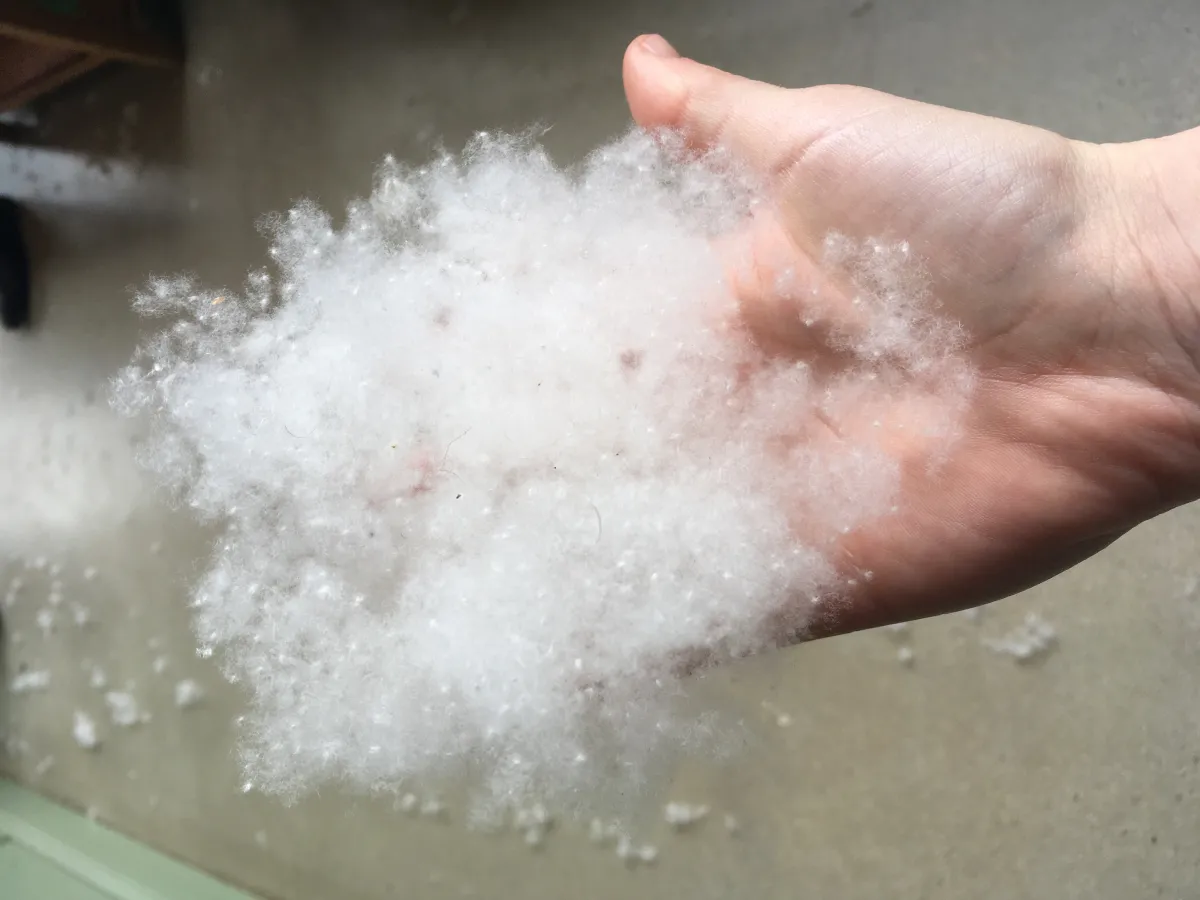What The Fluff?

It's Canberra's most magical season - the one that summons swooping from magpies, and tree fluff that falls and settles like snow. While you're sipping a coffee on campus, you might find yourself asking - what is the fluff? Where does it come from? What does it do to us? Here's Dr Matthew Brookhouse - our resident tree expert - to explain the current influx of snowy white matter on campus.
What is the fluff?
The downy fluff comprises tiny fibres that surround seeds inside the catkins of poplars and willows.
What kinds of trees does it come from?
Silver poplars (Populus alba) are the primary source of the ‘fluff’. The poplars are planted near the Pop-up Village along University Avenue and were once also part of the planting in the University Court area. Some of the fluff is produced by the willows (Salix spp.) on University Avenue near the Sullivan’s Creek bridge.
Can it cause allergies?
We love blaming the first thing we see. Statistics students on campus beware – the connection between fluff and hay fever is an illusory correlation (there is not real connection) or detection bias (fluff is easy to see, so easy to blame). The reality is that the production of fluff coincides with springtime pollen production. However, poplar fluff has been reported to impact upon people with respiratory difficulties such as asthma.
Do many trees produce fluff?
Yes, fluff is produced by several the northern hemisphere family Salicaeae. The family contains the willows (Salix) and poplars/aspens/cottonwoods (Populus). Despite the wide prevalence of fluff production in the family, P. alba is the principal source throughout Canberra – especially along Canberra and Wentworth Avenues in Kingston and Narrabundah/Fyshwick – as a consequence of the species’ use in street plantings.
What do some trees produce instead of fluff?
The fibres that comprise the fluff helps seed dispersal. By catching even light breezes and adding to the seed’s buoyancy, fluff allow seeds to be carried far from the mother parent. Strategies aimed at seed dispersal vary immensely between plant genera and produce a diversity of seeds and fruit that are carried on the air, float on water, catch in the fur (or socks) of passing animals or are eaten and passed through the digestive systems.
What do those trees do for the local ecology?
All organisms have an impact that can be negative or positive. Trees offer many positive outcomes in urban environments ranging from urban cooling, CO2 uptake and habitat provision. Species from Salicaceae are non-native so may be seen as displacing alternative native species that could be planted in their place. However, both willows and poplars can negatively affect waterways by heavily shading streambanks, fundamentally changing riparian ecosystems; clogging rivulets with invasive roots and clogging streams will autumn leaf falls. Both genera propagate vegetatively and a broken branches readily develop roots, growing into mature trees, far downstream from the parent plant following floods.
Is it a menace or a gift?
The definition of Salicaceae as friend or foe is context dependent and while it the family can lead to negative outcomes if used indiscriminately, plantings of poplars and willows can also yield positive outcomes in the right circumstances. One of my favourite sylvan images is the shimmering light cast by millions of quaking aspen (Populus tremuloides) leaves as a light breeze pushes the flattened petioles to and fro on an autumnal afternoon. The diverse experience that a diverse tapestry of trees deliver is a good thing.
If you’re cleaning it out of your café, what should you do with it?
See it for what it is – plants celebrating spring. Enjoy it.
